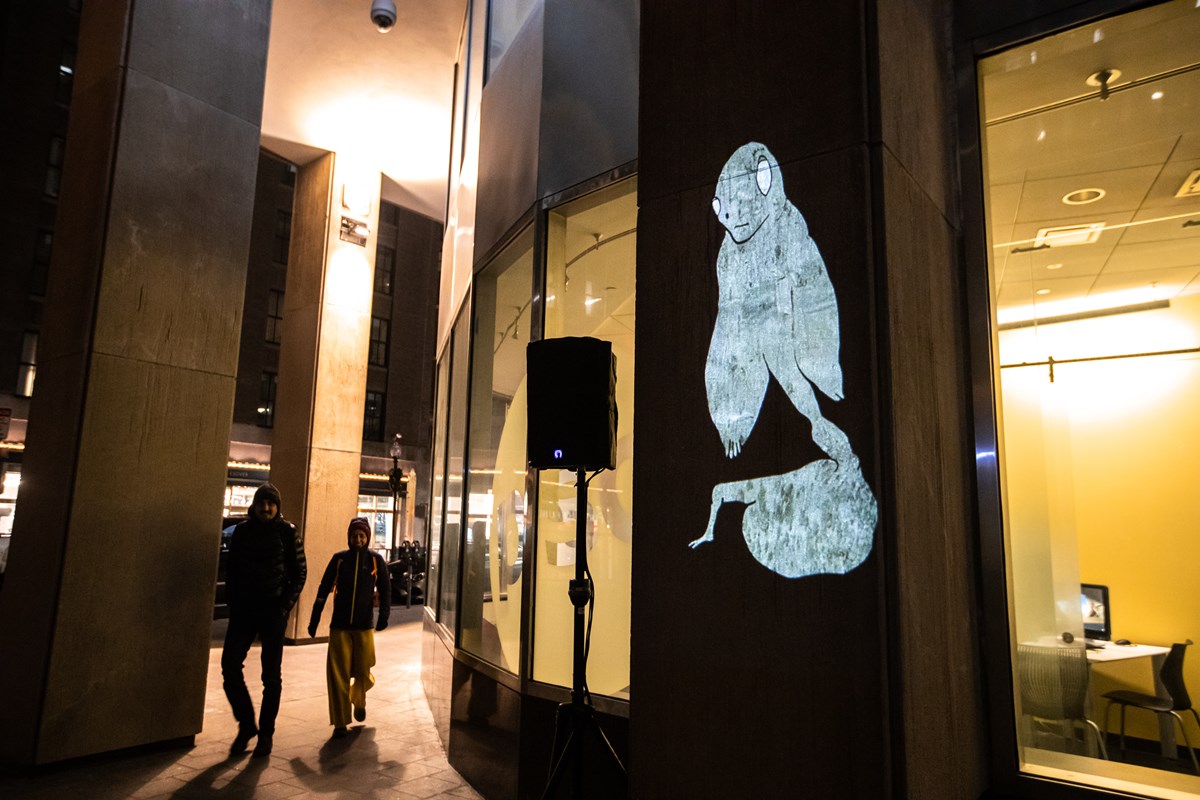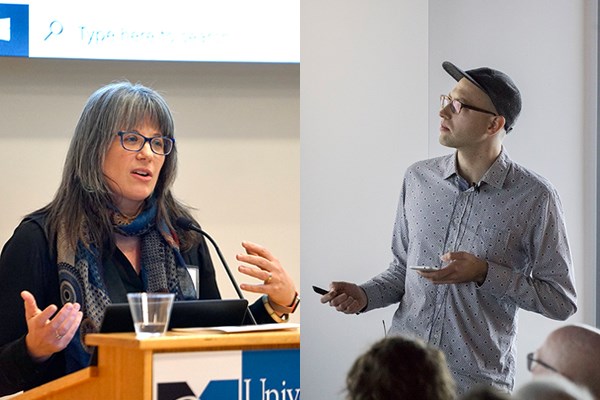Art & Design Faculty Who Use AI See Both Positives and Negatives of the Technology
 Image by Aram Boghosian
Image by Aram Boghosian
11/28/2023
By Brooke Coupal
Creatures unlike anything ever seen before appeared on the side of buildings in Boston’s Financial District with something to say.
“I’m worried about my future,” stated a bug-eyed critter. Nearby, a much larger critter with a mouth above its two eyes disclosed, “I’m worried that I will never leave.”
The artist duo Caitlin & Misha used artificial intelligence (AI) to create the creatures’ speech for their animation series “Ecology of Worries,” which has been projected on buildings during art festivals in Boston and Taos, New Mexico.
“We really liked the idea of people stumbling across these critters the same way you stumble across worries,” says Caitlin Foley, a visiting faculty lecturer for the Department of Art & Design.
Foley has been collaborating with Art & Design Assoc. Prof. Misha Rabinovich for about a decade, and together, they push the boundaries of their art by testing out different tools and processes. The pair has incorporated AI in their most recent projects, which Foley discussed at a recent Kennedy College of Sciences Conversation Starter event that explored the technology’s benefits and drawbacks.
“We are very interested in art and technology, and AI is becoming such a dominant part of what technology is now,” Foley says.
For “Ecology of Worries,” Foley and Rabinovich trained machine learning algorithms on worries that they’ve been collecting from people since 2016, using an online form. The machine learning algorithms then produced “synthetic worries,” which Foley and Rabinovich attached to critters that they illustrated using insects and plants for inspiration. The artists used text-to-speech AI to create voices for the critters, as well as Adobe Sensei, another AI tool, to produce mouth shapes for each critter so they would mouth the words appropriately.

